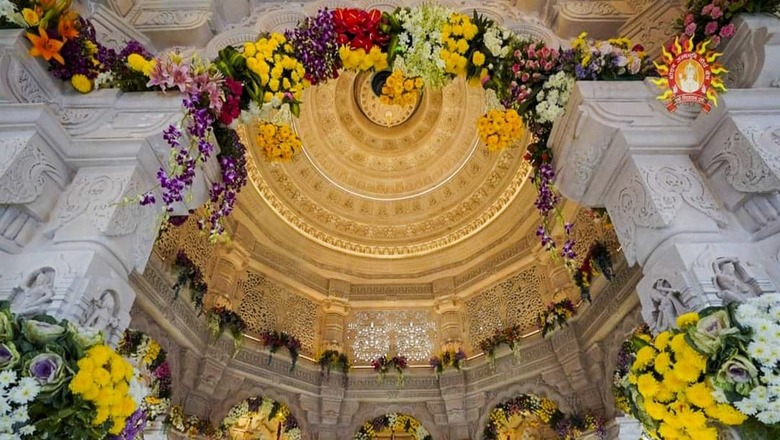
views
Devotees attending the Pran Pratishtha ceremony at the Ram Mandir have steadily made their way to the temple town. Locals and devotees gathered on both sides of the road, waving saffron flags and joyfully dancing to songs dedicated to Lord Ram.
Ayodhya was embraced by religious enthusiasm, and even the biting cold couldn’t dampen the spirits of those who gathered here to witness this historic moment. The sacred town is fully prepared to welcome Lord Ram, with Prime Minister Narendra Modi set to partake in the consecration ceremony.
Built In Nagara Style
Ayodhya Ram Mandir has been made in the traditional Nagara style of architecture. Temples in ancient India were made in the Nagara style, which are characterised by their towering spires or shikharas, intricate carvings, and symbolic representations. They have meticulous craftsmanship, as visible in the magnificent Khajuraho temples of Madhya Pradesh.
Influenced mostly by temple styles in northern India, the Nagara style originated around the 5th century AD. Prominent regions of influence also include Karnataka and parts of Madhya Pradesh.
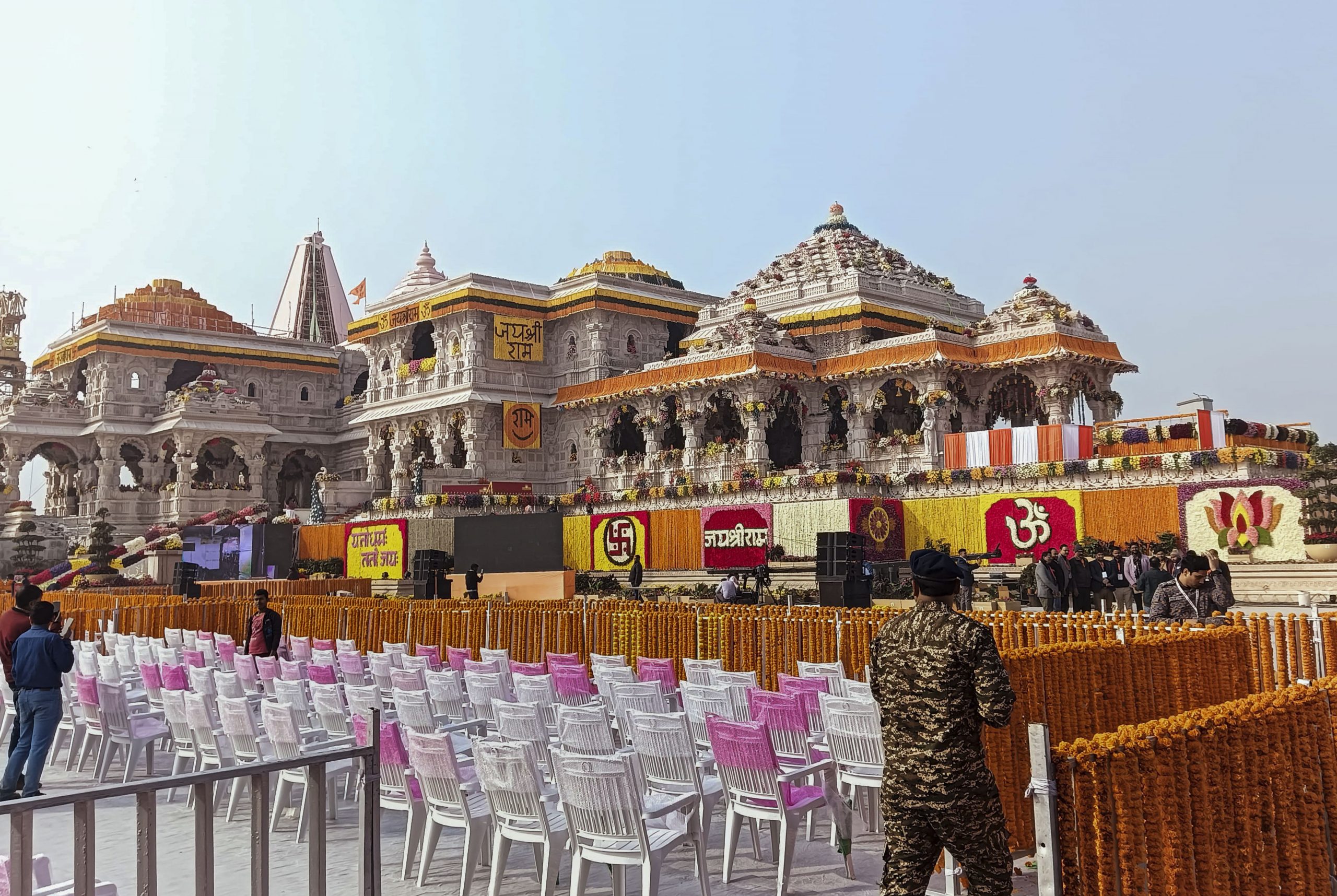

Supported by 392 Pillars, 44 Doors
The magnificent Ram Janmbhoomi Mandir in terms of length (east-west) is 380 feet, width 250 feet and height 161 feet. It is supported by 392 pillars and has 44 doors. The pillars and walls of the temple showcase intricately sculpted depictions of Hindu deities, gods and goddesses.
The idol of Ram Lalla has been placed in the sanctum sanctorum on the temple’s ground floor. The consecration rituals for the ‘Pran Pratishtha’ started from the Saryu river on January 16 and will be completed on Monday afternoon on the ‘Abhijeet Muhurta’, according to the trust.



Festivities Reach The Streets
Lakhs of people are expected to watch the event live on TV and online platforms as the Central government has announced a half-day off on January 22 and many states followed suit. Temples across the country have announced special festivities on the occasion.
From Washington DC to Paris to Sydney, events have been also planned in various parts of the world by either the Vishva Hindu Parishad (VHP) or Hindu diaspora groups.
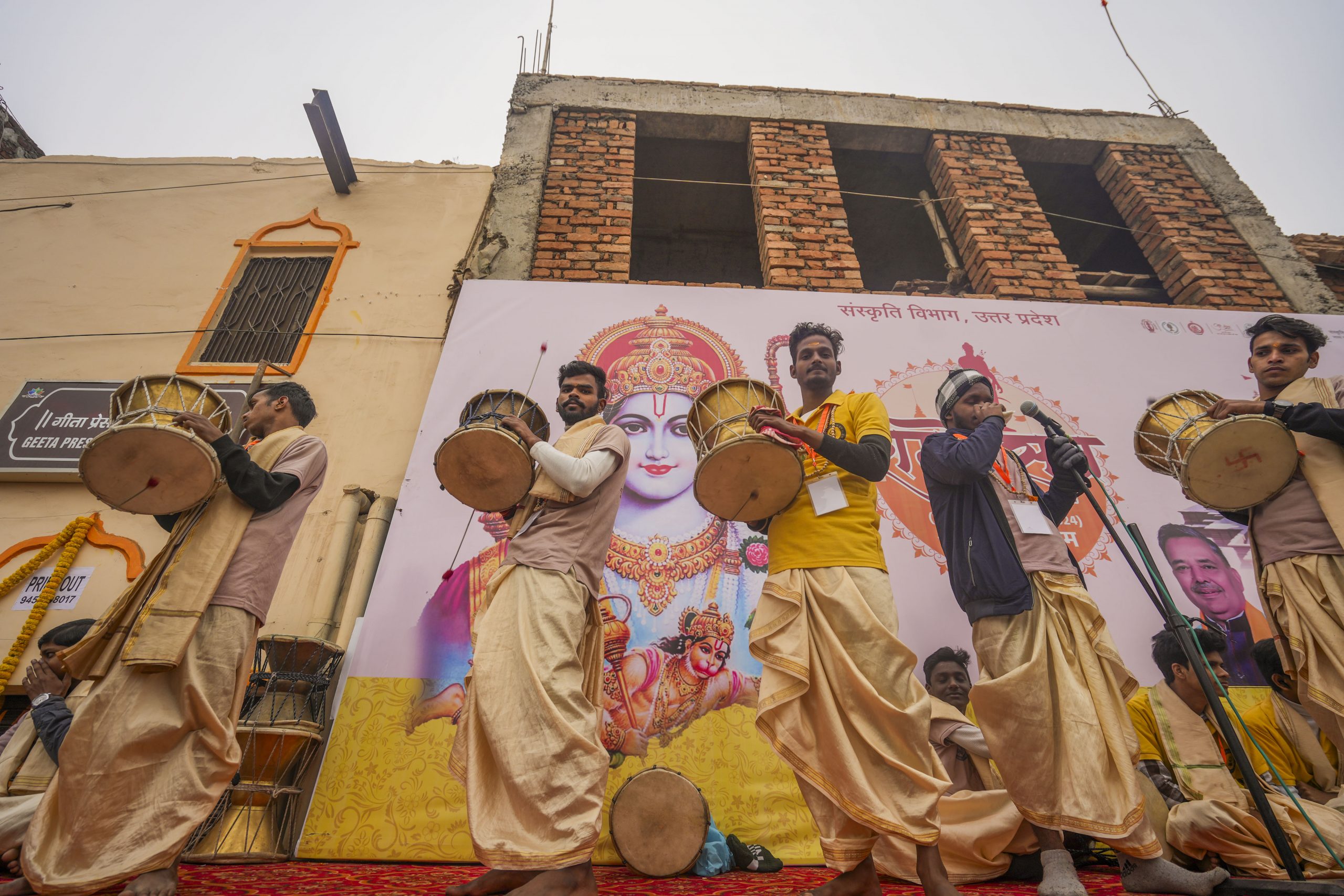
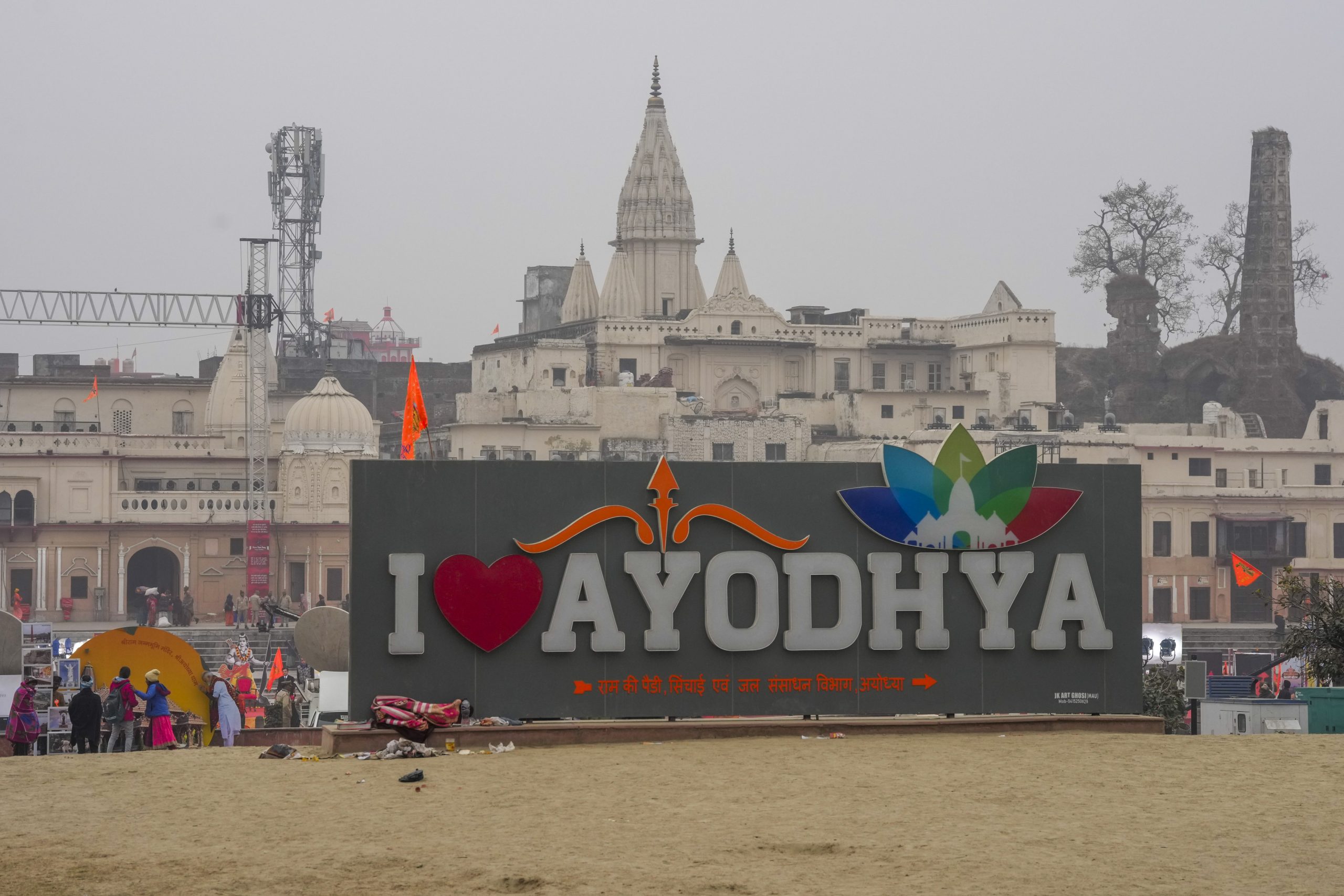
Ayodhya Turns Fortress
A multi-layer security cover is in place in Ayodhya for the consecration ceremony, with 10,000 CCTV cameras and drones equipped with artificial intelligence keeping an eye on the movement of people. Police personnel in plain clothes have been deployed at the venue.
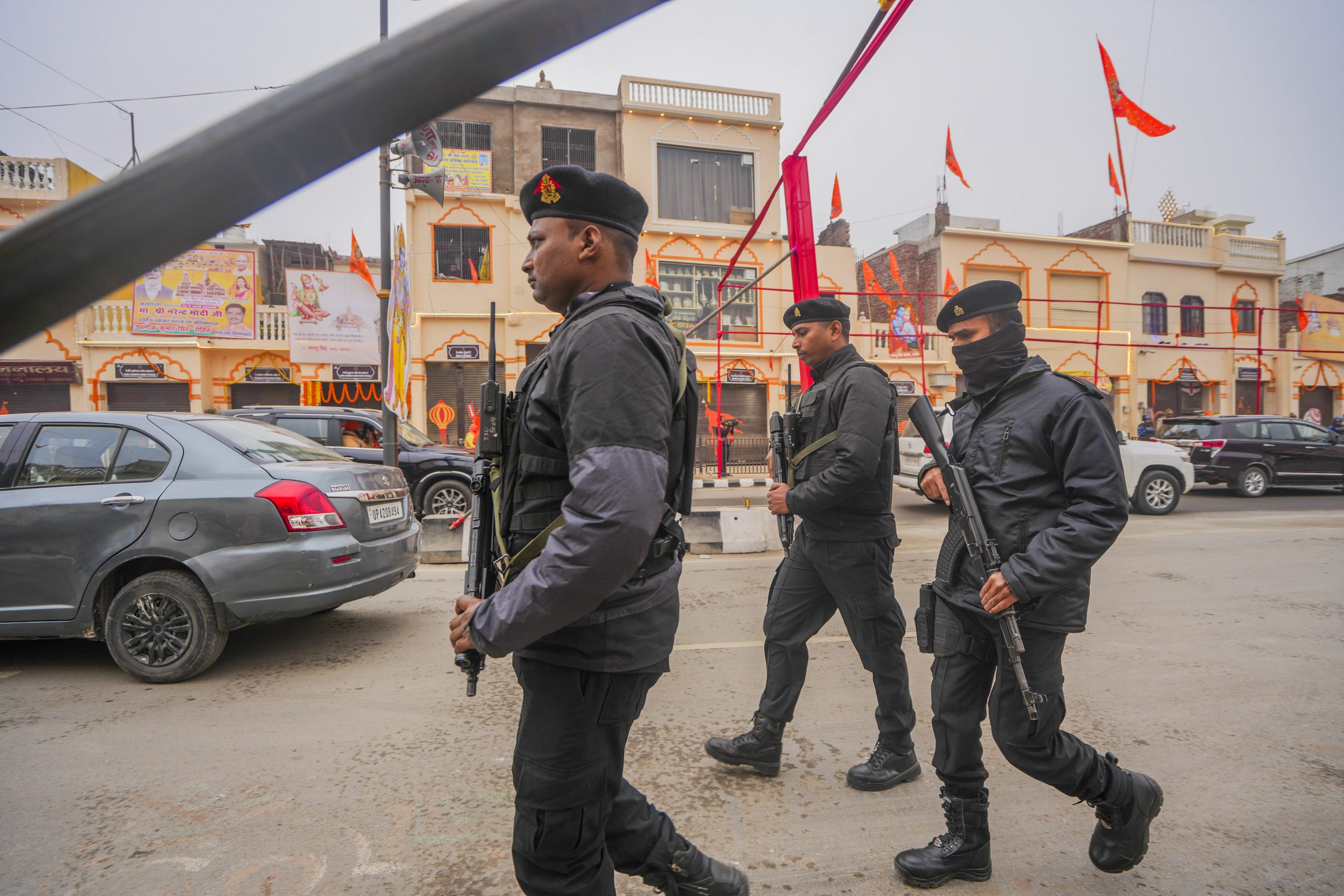

Movable barriers with barbed wires attached to them can be spotted at every prominent crossroads in the temple town, as police use them to regulate traffic, especially during VVIP movements. Multiple NDRF teams trained to tackle chemical, biological, radiological and nuclear attacks, drowning incidents and disasters like earthquakes have also been deployed.
Art on The Streets of Nagpur

The ceremony will begin at 12:20 pm, and according to the temple’s trust, it is expected to end by 1 pm. Following this, the guests will be addressed by the Prime Minister.
Ram Mandir Celebration in US
Devotees from across the globe expressed their connections to Ayodhya and the significance of the Ram Mandir for the diaspora. The Indian diaspora in the US illuminated Times Square, New York to celebrate the event.


People of Indian descent across the globe joined hands in celebrating the momentous inauguration of the Ram Mandir in Ayodhya, Uttar Pradesh, along with the pran pratishtha ceremony.


















Comments
0 comment